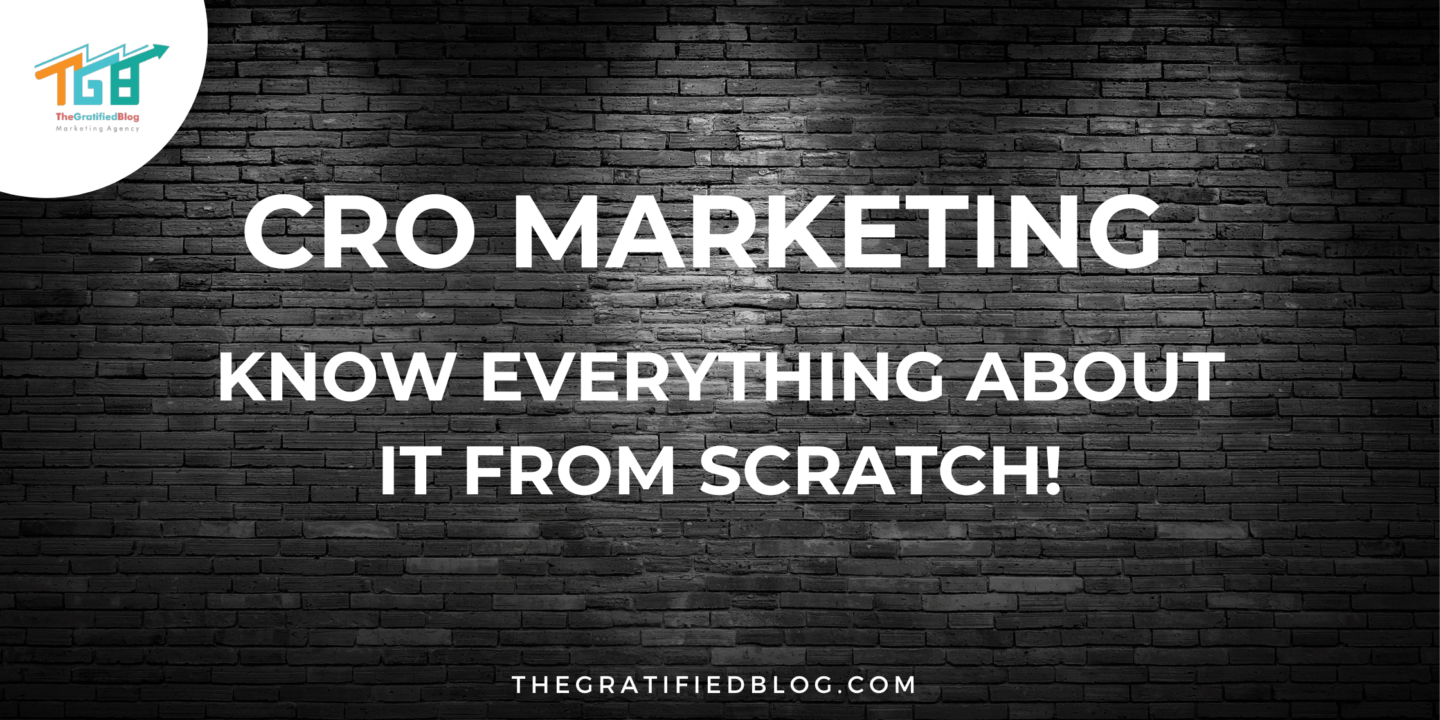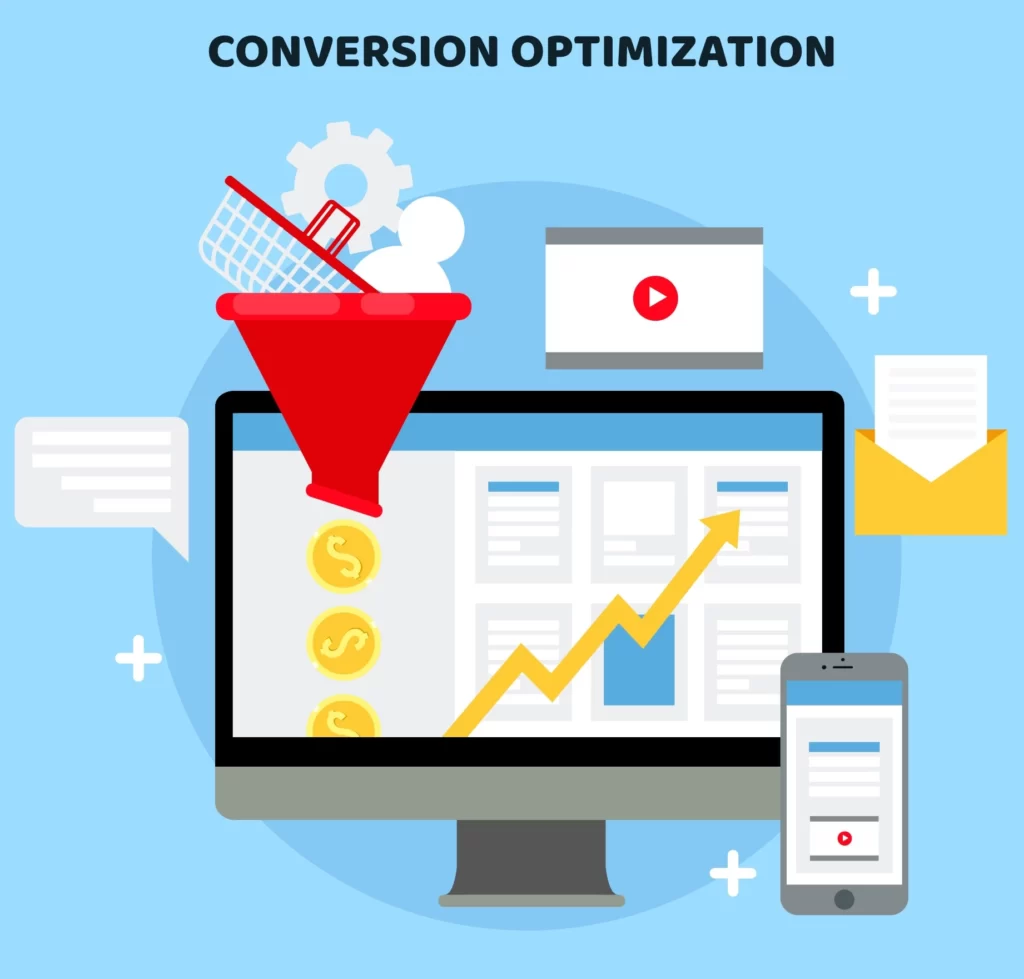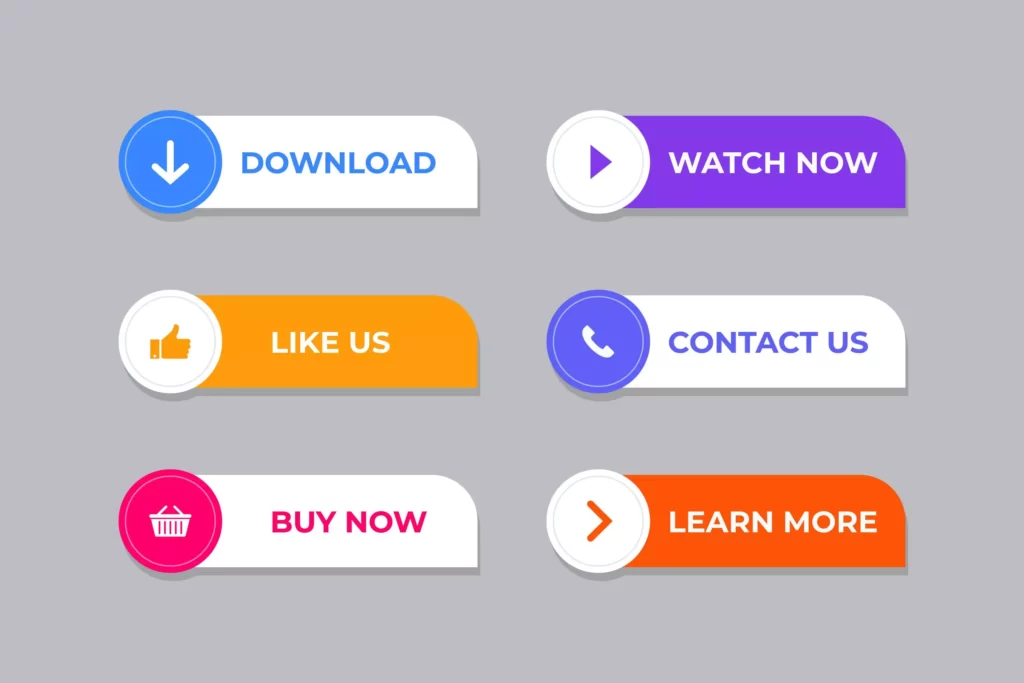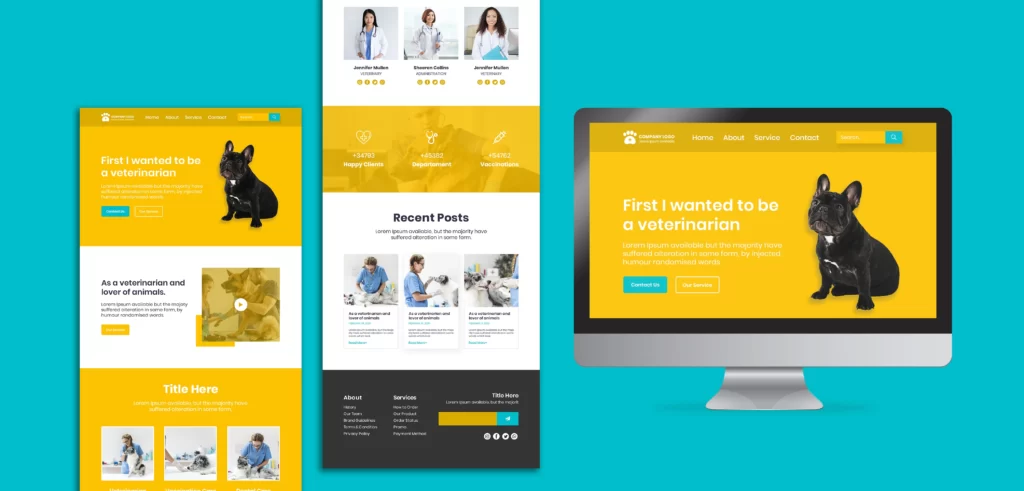
With new tools and technologies, getting traffic on the website through social media, SEO, and paid marketing has become more accessible. But, it will not guarantee that visitors will turn into potential leads. With this in mind, you must focus on CRO marketing.
CRO marketing helps companies to gain momentum in the long term, and it promotes sustainable business growth. In this article, we will briefly discuss CRO marketing and why it is the new growing way of digital marketing. So, without any further adieu, let’s dive in.
What Is CRO Marketing?

CRO marketing is known as Conversion Rate Optimization marketing, which helps businesses boost their conversion rate, encouraging visitors to take actions such as subscribing to a mailing list, registering for an event, filling out a form, etc. These actions can vary from meeting your main business conversion goal to achieving micro conversions.
For example, a user purchasing a product from an eCommerce store is the primary goal; however, clicking “add to cart” and making a payment could be a micro-conversion.
How To Calculate Conversion Rate?
To calculate the conversion rate, you can use the following formula:
Conversion Rate = (Number of Conversions / Total Number of Visitors) x 100
Here’s A Step-By-Step Guide On How To Calculate The Conversion Rate:
- Determine the desired action: Identify the specific action you want visitors to take on your website, such as making a purchase, filling out a form, subscribing to a newsletter, etc.
- Define the conversion: Decide what constitutes a successful conversion. For example, if the desired action is purchasing, a conversion occurs when a visitor completes the checkout process and successfully makes a payment.
- Gather data: Collect the necessary data to calculate the conversion rate. You need two critical pieces of information: the total number of conversions and visitors or sessions during a specific period.
- Calculate the conversion rate: Use the earlier formula to calculate the conversion rate. Divide the conversions by the total number of visitors and multiply by 100 to get the percentage.
For example, if you had 100 conversions and 1,000 visitors in a month, the calculation would be:
Conversion Rate = (100 / 1,000) x 100 = 10%
This means your conversion rate for that month is 10%.
Calculating the conversion rate helps you measure the effectiveness of your marketing efforts, identify improvement areas, and track the progress of your conversion optimization strategies over time.
Now. Let’s understand its benefits;
Benefits Of CRO Marketing
CRO (Conversion Rate Optimization) marketing offers several benefits that can significantly impact the success of your online business. Here are six key benefits of implementing CRO strategies:
- Increased Conversion Rates: By optimizing your website and marketing campaigns, CRO marketing helps improve the percentage of visitors who take the desired action, such as purchasing, signing up for a newsletter, or submitting a form. This increase in conversion rates directly translates into more leads, sales, and revenue.
- Better Return on Investment (ROI): CRO marketing allows you to maximize the return on your marketing investment. Instead of solely focusing on driving more traffic to your website, CRO helps you optimize the existing traffic, making visitors more likely to convert. This means you can achieve higher conversions without necessarily increasing your marketing budget.
- Enhanced User Experience: CRO marketing emphasizes improving the overall user experience on your website. By implementing user-friendly navigation, clear calls-to-action, and engaging content, you create a positive and seamless experience for visitors. This leads to increased trust, satisfaction, and repeat visits.
- Improved Customer Insights: As you conduct CRO experiments and analyze data, you gain valuable insights into customer behavior, preferences, and pain points. This information helps you better understand your audience and make data-driven decisions for future marketing campaigns, product development, and overall business strategies.
- Reduced Bounce Rates: CRO marketing aims to minimize bounce rates by improving the relevance and effectiveness of your landing pages and website content. By capturing and retaining visitors’ attention, you increase the likelihood of them exploring further and taking the desired action rather than quickly leaving your site.
- Competitive Advantage: By investing in CRO marketing, you gain a competitive edge in your industry. As you optimize your website and marketing efforts to provide a better user experience and higher conversion rates, you differentiate yourself from competitors who may need to utilize these strategies. That can lead to increased market share and customer loyalty.
Now that you understand CRO marketing and its benefits, let’s explore the crucial topic of CRO marketing strategies.
CRO Marketing Strategies To Get Started
When you have good traffic on your website, those visitors will likely turn into your customers. And to do this, your CRO strategies should be visitor-friendly.
Here are some of the best CRO marketing strategies that you can implement to boost your conversion rate:
A/B Testing
A/B testing is a CRO technique that compares two or more variations of a webpage or element to determine which performs better in achieving the desired conversion goals.
It is a data-driven approach that helps marketers understand how design, content, or user experience changes can impact user behavior and ultimately improve conversion rates.
Here’s how A/B testing works and some best practices:
- Test Setup: Start by identifying the specific element or area of your website that you want to test. This could be a headline, call-to-action button, layout, color scheme, or any other element directly influencing user behavior. Create two or more versions (A and B) with distinct variations for testing.
- Define the Goal: Clearly define the goal of your A/B test. It could be increasing click-through rates, improving form submissions, boosting purchases, or any other conversion metric that aligns with your overall marketing objectives.
- Split Traffic: Split your website traffic randomly into equal or proportional segments, directing one group to version A and the other group to version B. Ensure that the testing period is long enough to gather sufficient data for analysis, accounting for variations in traffic volume and user behavior.
User Experience Optimization

User Experience Optimization (UXO) improves users’ overall experience when interacting with a website, application, or digital product. It involves understanding user behavior, preferences, and needs to create a seamless and engaging experience that drives user satisfaction and achieves business goals.
Here are some key elements and best practices for user experience optimization:
- Usability: Ensure that your website or application is easy to use and navigate. Optimize the layout, menu structure, and content organization to facilitate intuitive and efficient user interactions. Consider usability principles such as clear labeling, logical information hierarchy, and consistent design elements.
- Responsive Design: With the increasing use of mobile devices, optimizing the user experience for different screen sizes and resolutions is crucial. Implement responsive design techniques to ensure your website or application adapts seamlessly to various devices, providing a consistent and user-friendly experience.
- Page Load Speed: Users expect fast-loading websites and applications. Optimize page load speed by minimizing file sizes, leveraging caching techniques, and optimizing server response times. A faster loading speed enhances user satisfaction and reduces bounce rates.
Clear And Compelling Call-to-Action (CTA)

A clear and compelling call-to-action (CTA) is crucial in driving user engagement and conversions on your website or digital marketing campaigns. It serves as a direct invitation for users to take a specific action that aligns with your business goals.
Here are some key aspects to consider when creating clear and compelling CTAs:
- Placement and Visibility: Position your CTA prominently and make it easily visible on your webpage or marketing material. It should be strategically placed where users are most likely to notice it without having to search for it. Consider using design elements such as color contrast, whitespace, or directional cues to draw attention to the CTA.
- Action-Oriented Language: Use robust, action-oriented language that communicates the desired action users want. Use verbs that convey a sense of urgency and encourage immediate engagement. Examples include “Buy Now,” “Sign Up Today,” or “Get Started.”
- Concise and Clear Messaging: Keep the CTA text concise and straightforward. Avoid ambiguity or confusion by using clear and specific language that leaves no doubt about what users will get or achieve by clicking the CTA. Focus on the value proposition and benefits of taking the action.
- Design and Visual Appeal: Design your CTA button or element to stand out from the rest of the page content. Utilize contrasting colors, bold typography, or visual elements that grab attention and create a sense of importance. Ensure that the CTA is visually appealing and aligned with your overall branding.
Also Read: A Complete Guide To Types Of CTA’s
Personalization And Targeted Messaging
Personalization and targeted messaging are powerful CRO (Conversion Rate Optimization) techniques that tailor your marketing efforts to meet individual users’ needs and preferences. You can create a more engaging and impactful user experience that drives conversions by delivering relevant and personalized content. Here’s how personalization and targeted messaging can optimize your CRO efforts:
- Audience Segmentation: Divide your audience into segments based on demographics, interests, behaviors, or purchase history. By understanding each segment’s different characteristics and preferences, you can create personalized messages that resonate with their needs.
- Dynamic Content: Use dynamic content to deliver customized messages based on user attributes or behavior. Tailor headlines, images, product recommendations, or offers to align with the interests and preferences of individual users. This level of personalization can significantly enhance user engagement and conversion rates.
- Behavioral Tracking: Implement tracking mechanisms to monitor user behavior and interactions on your website or application. Analyze data such as browsing history, search queries, or previous purchases to gain insights into user preferences. Leverage this data to deliver personalized recommendations, targeted promotions, or relevant content.
Landing Page Optimization
Landing pages play a critical role in driving conversions. Optimize landing pages by aligning the content with the specific offer or campaign, ensuring a clear value proposition, and minimizing distractions. Use persuasive copy, compelling visuals, and social proof to build trust and encourage visitors to take action.
After learning about CRO marketing, its advantages, and various strategies, you may wonder: What top CRO marketing tools are available?
Don’t worry; we’ve got you covered.
CRO Marketing Tools
Here are some of the best CRO tools you can use to collect necessary data about your visitors:
FAQs
Q1: How Does CRO Marketing Differ From Traditional Marketing?
A: Traditional marketing often focuses on driving more traffic to a website, while CRO marketing emphasizes optimizing the existing traffic for higher conversions.
Traditional marketing may involve tactics such as advertising and promotion, while CRO marketing involves improving user experience, testing different elements, and making data-driven optimizations.
Q2: Is CRO Marketing A One-Time Effort Or An Ongoing Process?
A: CRO marketing is an ongoing process. It requires continuous monitoring, testing, and optimization to adapt to changing user behavior, market trends, and business goals. Regularly reviewing and iterating your CRO strategies can improve your conversion rates and drive better results for your business.
Summing Up
To sum it up, more than 80% of companies have improved their conversion rates through CRO marketing. Though you need data about your visitors, no one can stop you from outshining in your specific industry once you have that.
You can initiate your process by understanding how CRO marketing works and constantly following the best CRO marketing practices to avoid the most common mistakes.









2 replies on “CRO Marketing: Know Everything About It From Scratch!”
Great article! That is the type of info that are supposed to be shared across the
internet. Shame on the seek engines for no longer positioning this
submit higher! Come on over and visit my web site . Thank you
=)
It’s very easy to find out any matter on web as compared to
textbooks, as I found this post at this web site.